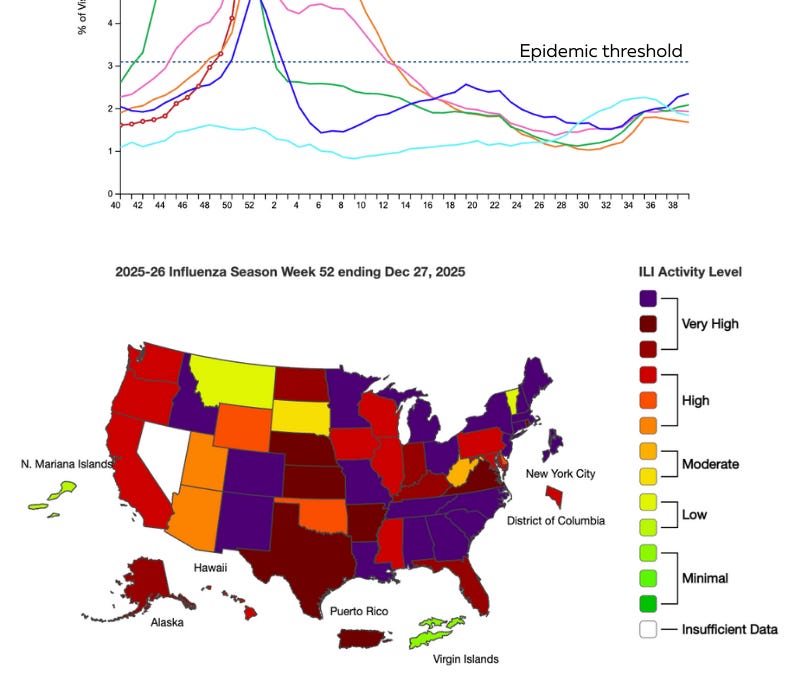Well, it’s been a week. But happy New Year! I hope it was peaceful, magical, and restful. If you’re a parent, I’m guessing you’re just as excited as I am that school is back in session.
There’s one big thing we need to talk about: flu….

Well, it’s been a week. But happy New Year! I hope it was peaceful, magical, and restful. If you’re a parent, I’m guessing you’re just as excited as I am that school is back in session.
There’s one big thing we need to talk about: flu….

Ovarian mature cystic teratomas (MCTs) are widely known as germ cell-derived neoplasms capable of multilineage differentiation.1 Although generally benign, these tumors exhibit malignant transformation in approximately 1–2% of…
Kühnert, C., Helbing, D. & West, G. B. Scaling laws in urban supply networks. Phys. A 363, 96–103. https://doi.org/10.1016/j.physa.2006.01.058 (2006).
Bettencourt, L. M. A., Lobo, J.,…

Around 350,000 people in the United States have Down syndrome (DS), a genetic condition associated with lower bone mass and increased risk of bone fracture. Research from Texas A&M University has previously shown that when people with…
According to the Centers for Disease Control and Prevention (CDC), the homeless population is at a higher risk of coming in contact with tuberculosis (TB) than the settled (housed) population. The risk factors for the homeless…
Call to schedule an appointment.

If you are a Pinellas or Pasco County health care provider or laboratory director that tests, diagnoses and/or treats HIV/AIDS patients, please be aware that the Florida Administrative Code, Chapter 64D-3 states that certain demographic…
Florida Statute 64D-3.042 requires all pregnant women to be tested for sexually transmitted diseases (STDs) including, HIV, chlamydia, gonorrhea, hepatitis B, and syphilis at the initial prenatal care visit and again at 28 to 32 weeks gestation.
24/7 Disease Reporting: 407-343-2155
Fax – Disease Report Forms:407-343-2145
STD/HIV/AIDS: 407-343-2181
Refugee Health: 407-343-2168
Mailing Address
Florida Department of Health in…